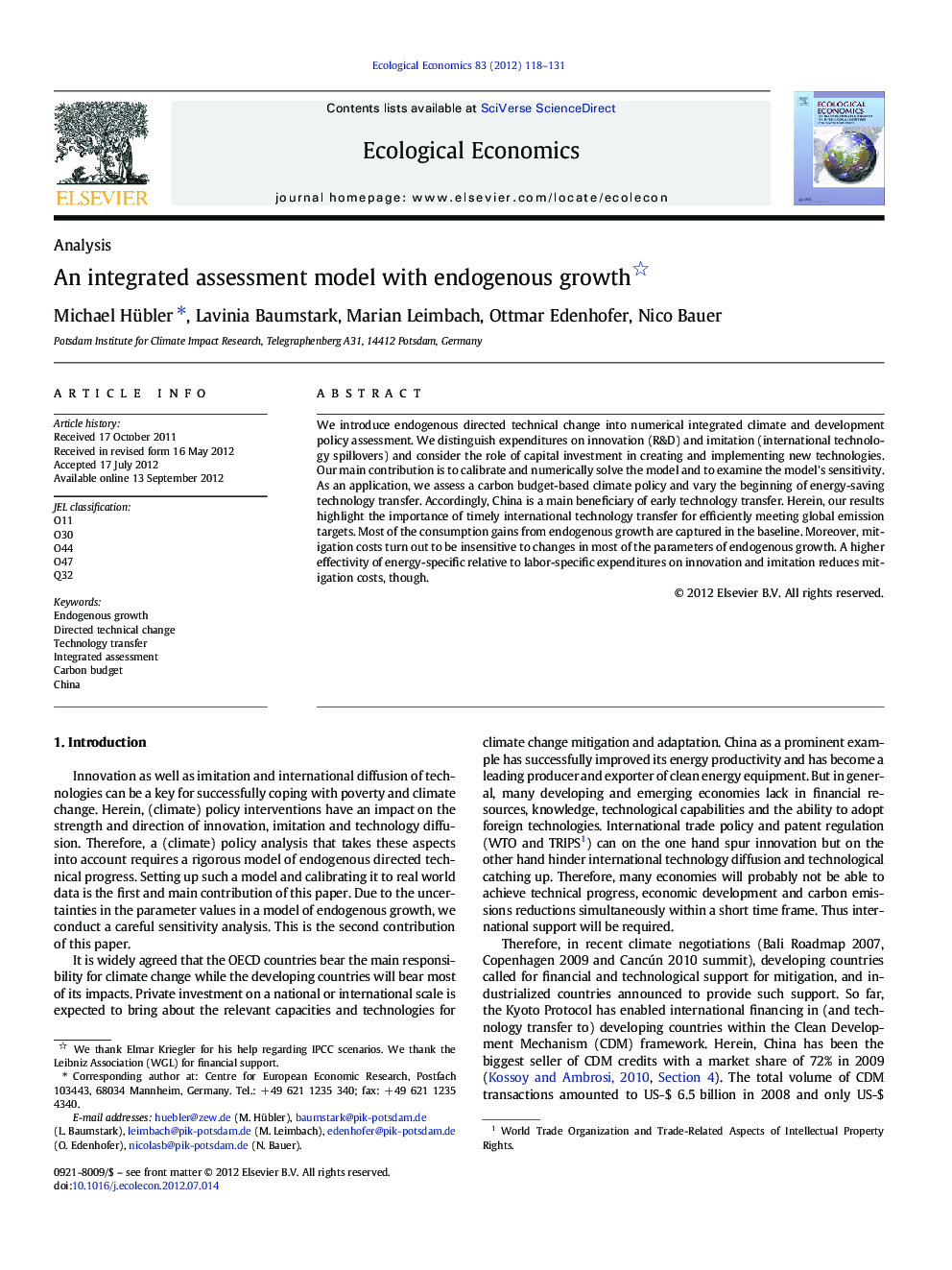| Article ID | Journal | Published Year | Pages | File Type |
|---|---|---|---|---|
| 5050027 | Ecological Economics | 2012 | 14 Pages |
We introduce endogenous directed technical change into numerical integrated climate and development policy assessment. We distinguish expenditures on innovation (R&D) and imitation (international technology spillovers) and consider the role of capital investment in creating and implementing new technologies. Our main contribution is to calibrate and numerically solve the model and to examine the model's sensitivity. As an application, we assess a carbon budget-based climate policy and vary the beginning of energy-saving technology transfer. Accordingly, China is a main beneficiary of early technology transfer. Herein, our results highlight the importance of timely international technology transfer for efficiently meeting global emission targets. Most of the consumption gains from endogenous growth are captured in the baseline. Moreover, mitigation costs turn out to be insensitive to changes in most of the parameters of endogenous growth. A higher effectivity of energy-specific relative to labor-specific expenditures on innovation and imitation reduces mitigation costs, though.
⺠We design and calibrate an integrated assessment model with endogenous growth. ⺠We distinguish energy- vs. labor-specific innovation vs. imitation. ⺠Sensitivity analysis: effectivity of energy-specific option lowers mitigation costs. ⺠Energy specific technical progress is already strongly exploited in the baseline. ⺠China benefits from early energy specific technology diffusion.
